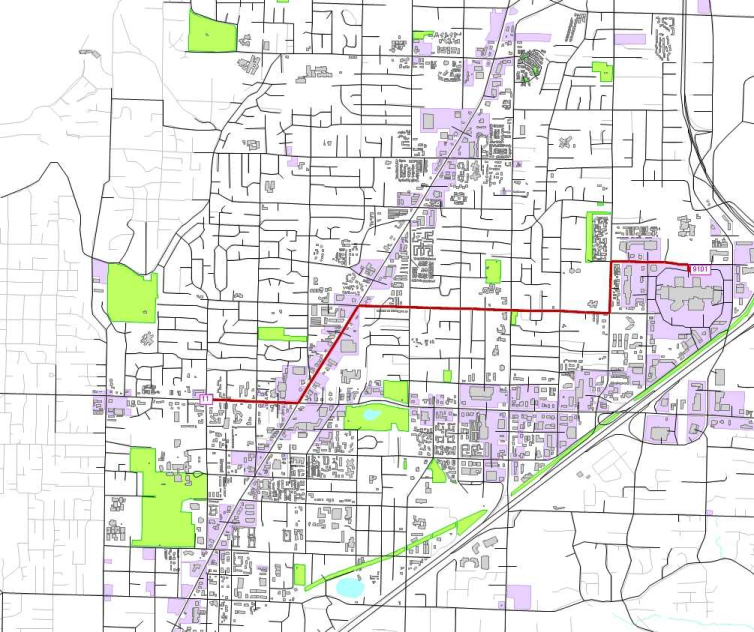With the shortest path search command you can determine the best paths from a chosen origin to a chosen destination and display the result in the network (see Image 241). Different search criteria can be used to find the shortest path. The paths found can then be displayed in a shortest path search list.

Image 241: Shortest path search between two nodes in PrT
An interactive shortest path search can be used especially to find errors in network modeling. With the graphic output of the shortest path, you can quickly determine implausible shortest paths in the network editor. It could thus occur, that links for a transport system were mistakenly blocked by the modeler and therefore an unexpected path between two nodes is assumed as the shortest path. With the shortest path search you can find such paths and undo the road closure if necessary.
Shortest path search PrT
In PrT, you can search for shortest paths between nodes, main nodes, or zones (User Manual: Shortest path search PrT). The shortest path is searched for the selected traffic system respectively. The following choice criteria are possible as search criteria.
- t0 (travel time in unloaded network)
- tCur (travel time in loaded network)
- Impedance
- Distance
- AddValues 1 to 3 (this also allows the use of values of any other attributes as a criteria for the shortest path search)
Shortest path search PuT
Shortest path search for PuT can either be timetable-based (PuT tab) or transport system-based (PuT TSys tab) (User Manual: Shortest path search PuT).
If a timetable-based search is performed, the connection with a minimum search impedance is output as the shortest path. Thereby search impedance is any linear combination of journey time and the number of transfers.
Search impedance = x • journey time + y • number of transfers
You can also specify whether you consider a shorter journey time or less transfers more favorable for the shortest path search. You can search for a timetable-based shortest path between two zones or two stop areas.
The transport system-based shortest path search does not differentiate between individual PuT lines. Modeling the transport supply only considers the links of a basic network with their specific run times. A basic network may include the following three options:
- All road and rail links of the link network
- Only those links traversed by PuT lines
- Only those links traversed by active PuT lines
A graph is created from the links of this basic network. If forms the basis for a shortest path search. Because individual lines are not distinguished, transfer stops with their respective transfer times cannot be included in the search. However, it is possible to include transfer times between different transport systems (transfer penalties for transport system transfers, such as between bus and train). The transport system-based shortest path search can be performed for an area between two zones or two nodes.

